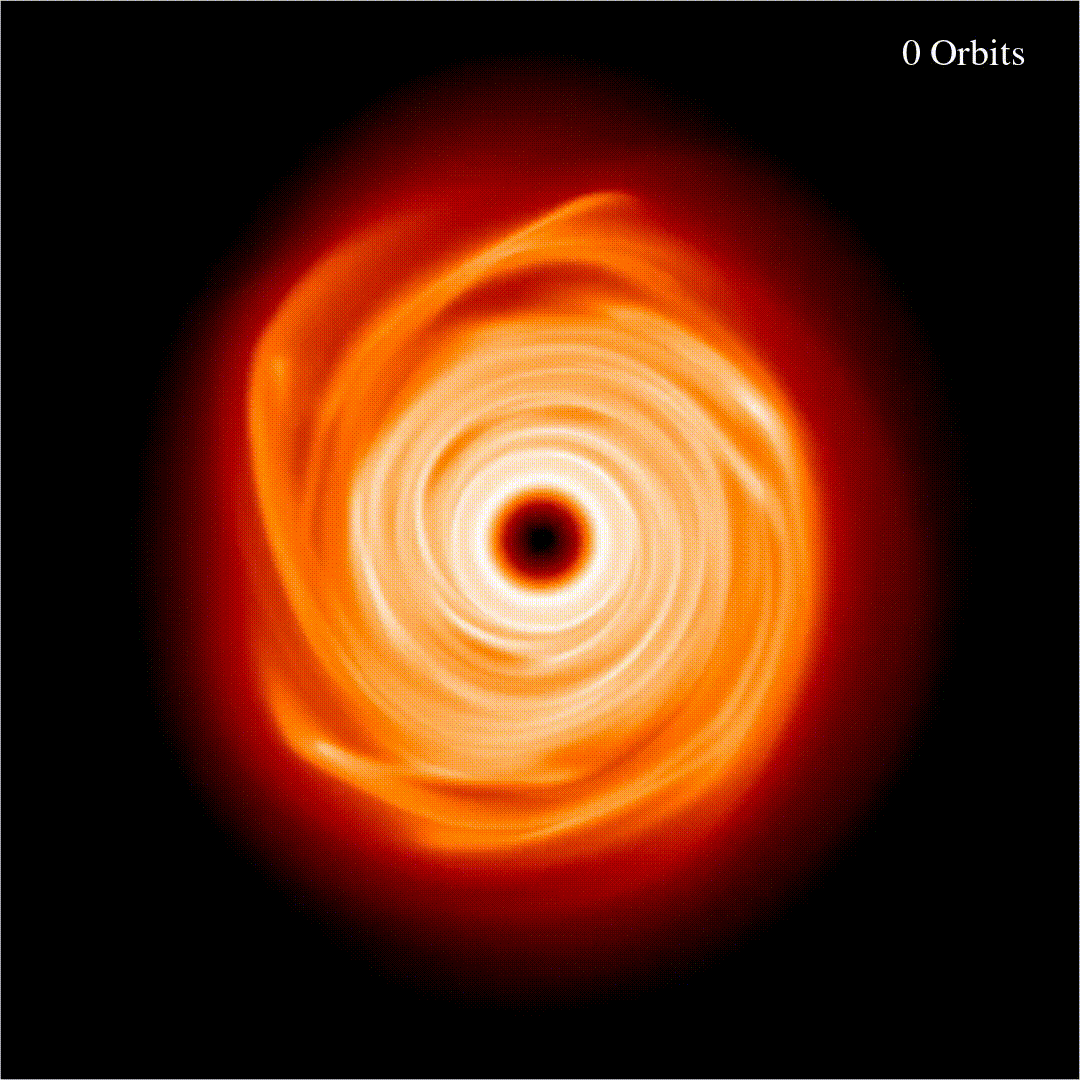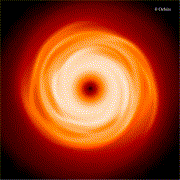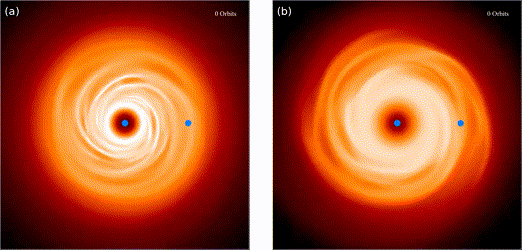Research Highlights
Warping Away Gravitational Instabilities in Protoplanetary Discs
Sahl Rowther, Rebecca Nealon, Farzana Meru

We perform 3D SPH simulations of warped, non-coplanar gravitationally unstable discs to show that as the warp propagates through the self-gravitating disc, it heats up the disc rendering it gravitationally stable. Thus losing their spiral structure and appearing completely axisymmetric. In their youth, protoplanetary discs are expected to be massive and self-gravitating, which results in non-axisymmetric spiral structures. However recent observations of young protoplanetary discs with ALMA have revealed that discs with large-scale spiral structure are rarely observed in the midplane. Instead, axisymmetric discs with some also having ring & gap structures are more commonly observed. Our work involving warps, non-coplanar disc structures that are expected to commonly occur in young discs, potentially resolves this discrepancy between observations and theoretical predictions. We demonstrate that they are able to suppress the large-scale spiral structure of self-gravitating protoplanetary discs.
Hiding Signatures of Gravitational Instability in Protoplanetary Discs with Planets

Sahl Rowther, Farzana Meru, Grant M. Kennedy, Rebecca Nealon, Christophe Pinte
We carry out three-dimensional smoothed particle hydrodynamics simulations to show that a migrating giant planet strongly suppresses the spiral structure in self-gravitating disks. We present mock Atacama Large Millimeter/submillimeter Array (ALMA) continuum observations that show that in the absence of a planet, spiral arms due to gravitational instability are easily observed. Whereas in the presence of a giant planet, the spiral structures are suppressed by the migrating planet resulting in a largely axisymmetric disk with a ring and gap structure. Our modeling of the gas kinematics shows that the planet's presence could be inferred, for example, using optically thin 13C16O. Our results show that it is not necessary to limit the gas mass of disks by assuming high dust-to-gas mass ratios in order to explain a lack of spiral features that would otherwise be expected in high-mass disks.
Planet Migration in Self-Gravitating Discs: Survival of Planets
Sahl Rowther, Farzana Meru

We carry out three-dimensional SPH simulations to study whether planets can survive in self-gravitating protoplanetary discs. The discs modelled here use a cooling prescription that mimics a real disc which is only gravitationally unstable in the outer regions. We do this by modelling the cooling using a simplified method such that the cooling time in the outer parts of the disc is shorter than in the inner regions, as expected in real discs. We find that both giant (> M_Sat) and low mass (< M_Nep) planets initially migrate inwards very rapidly, but are able to slow down in the inner gravitationally stable regions of the disc without needing to open up a gap. This is in contrast to previous studies where the cooling was modelled in a more simplified manner where regardless of mass, the planets were unable to slow down their inward migration. This shows the important effect the thermodynamics has on planet migration. In a broader context, these results show that planets that form in the early stages of the discs' evolution, when they are still quite massive and self-gravitating, can survive.
